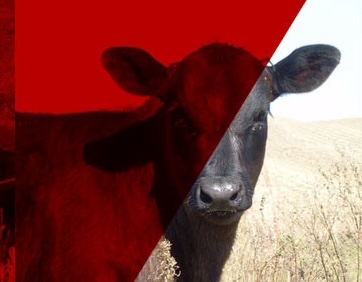Grass tetany can be a costly concern when transitioning cows to lush, cool-season pastures, but it can be prevented with proper magnesium (Mg) supplementation. Preparing for turnout by monitoring high-Mg mineral intake will help maintain adequate Mg status and prevent deficiencies.
The secondary magnesium (Mg) deficiency referred to as grass tetany is often associated with “going to grass” when cows are grazing lush, cool-season grasses, including small cereals and bromegrass.
Magnesium is critical for nervous and muscle function, which is portrayed by the key symptoms of acute grass tetany, including: excitable behavior, nervousness, reduced feed intake, twitching (especially around the face, ears, and flanks), blind staggering, and as the disease progresses, convulsions.
While grass tetany is indeed caused by Mg deficiency, it is somewhat of a misnomer because it is driven by high nitrogen (N) and potassium (K) that impair ruminal absorption of Mg, even when forages have adequate Mg concentrations. This is especially true for improved pastures that have been fertilized with N and/or K.
Lactating cows, particularly older, mature cows, are at the greatest risk of developing grass tetany. This is driven by an uptick in Mg requirements for lactating cows (0.12% for pregnant cows and 0.20% during lactation on a diet dry matter (DM) basis). The peak Mg demand corresponds with calving because of 3 times greater concentration of Mg in colostrum compared with true milk.
The main determinant of grass tetany is not only Mg concentration in the diet, but the concentration of N and K. Forages can contain variable Mg, but grass tetany tends to occur when forages have:
- low Mg (0.15%)
- low calcium (Ca; < 0.4%)
- high K (> 2.5%)
To address these factors, supplementing additional Mg is recommended (10-15% Mg in 4 oz target intake mineral), along with adequate Ca and salt intake. When evaluating commercially available products, consider the K content; supplementing additional K to the diet is counterproductive to preventing tetany.
Magnesium is commonly fed in the form of magnesium oxide (MgO), which is bitter and unpalatable to cows. To manage reduced mineral intake:
- Introduce high-Mg mineral several weeks before turnout to allow cows to adapt.
- Monitor mineral consumption and if intake is low consider adding 1 lb of corn or dried distillers grains per 50 lbs of mineral mix to increase consumption.
Additionally, sodium deficiency decreases Mg absorption due to reliance on maintaining an electrochemical gradient for Mg transport into cells. Salt is critical for Mg absorption, and the delivery method affects mineral intake:
- If supplementing minerals through a fortified feedstuff (e.g., cake or pellets), ensure free-choice salt is available.
- If providing minerals via a free-choice mineral mix, incorporate salt into the mix rather than offering it separately, as cows tend to consume salt preferentially over the mineral mix.
For a more comprehensive review of mineral and vitamin supplementation strategies, visit: Formulation Considerations for Mineral and Vitamin Supplements for Beef Cows
Article by Brock Ortner, Nebraska Extension Educator; and Mary Drewnoski, Nebraska Extension Beef-Systems Specialist.
Topics covered:
Pasture & range, Grazing systems & best practices, Mineral supplements

